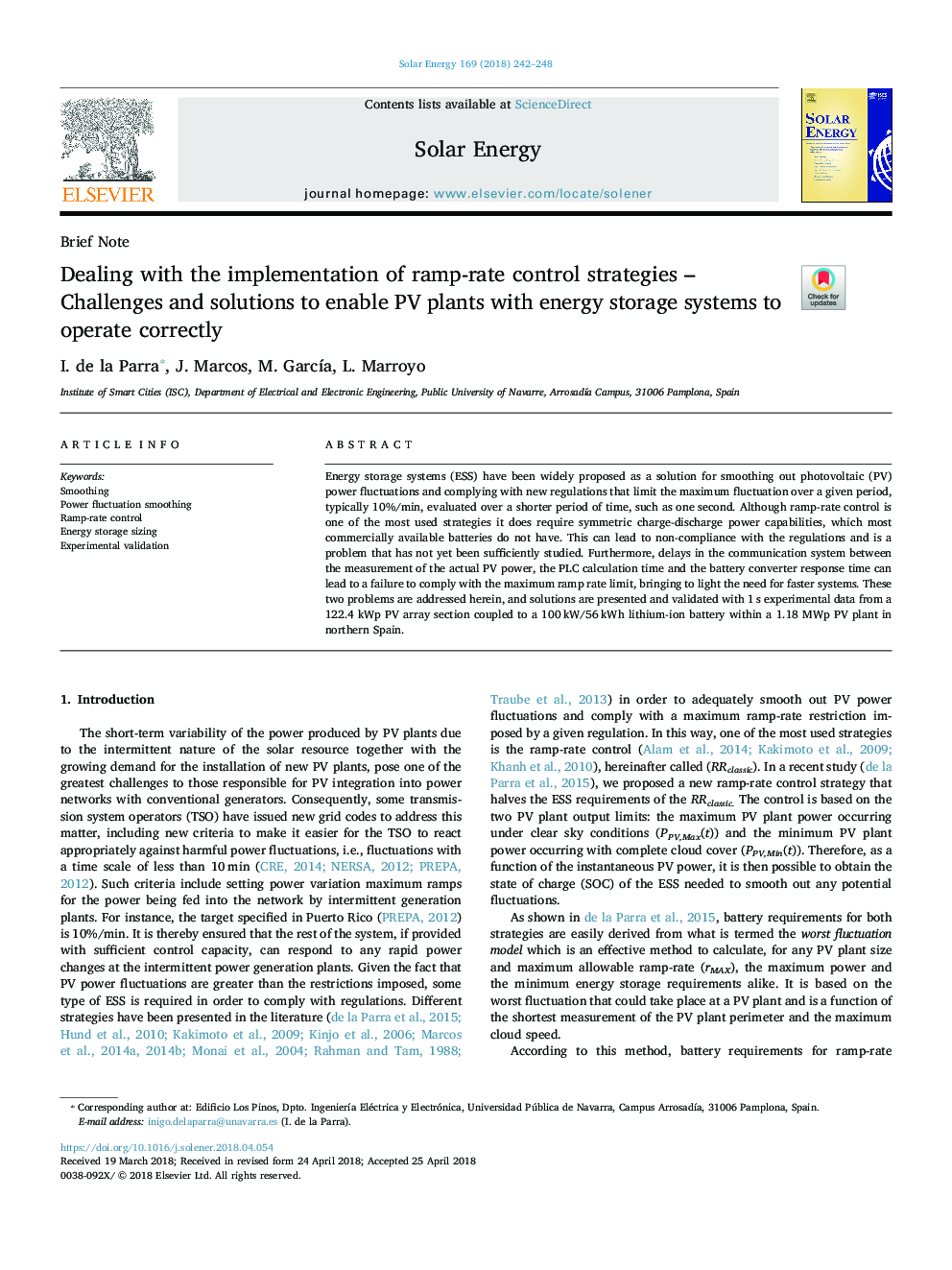| Article ID | Journal | Published Year | Pages | File Type |
|---|---|---|---|---|
| 7935265 | Solar Energy | 2018 | 7 Pages |
Abstract
Energy storage systems (ESS) have been widely proposed as a solution for smoothing out photovoltaic (PV) power fluctuations and complying with new regulations that limit the maximum fluctuation over a given period, typically 10%/min, evaluated over a shorter period of time, such as one second. Although ramp-rate control is one of the most used strategies it does require symmetric charge-discharge power capabilities, which most commercially available batteries do not have. This can lead to non-compliance with the regulations and is a problem that has not yet been sufficiently studied. Furthermore, delays in the communication system between the measurement of the actual PV power, the PLC calculation time and the battery converter response time can lead to a failure to comply with the maximum ramp rate limit, bringing to light the need for faster systems. These two problems are addressed herein, and solutions are presented and validated with 1â¯s experimental data from a 122.4 kWp PV array section coupled to a 100â¯kW/56â¯kWh lithium-ion battery within a 1.18 MWp PV plant in northern Spain.
Related Topics
Physical Sciences and Engineering
Energy
Renewable Energy, Sustainability and the Environment
Authors
I. de la Parra, J. Marcos, M. GarcÃa, L. Marroyo,
